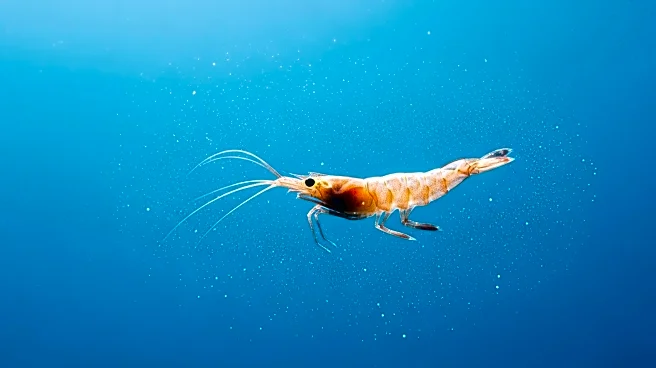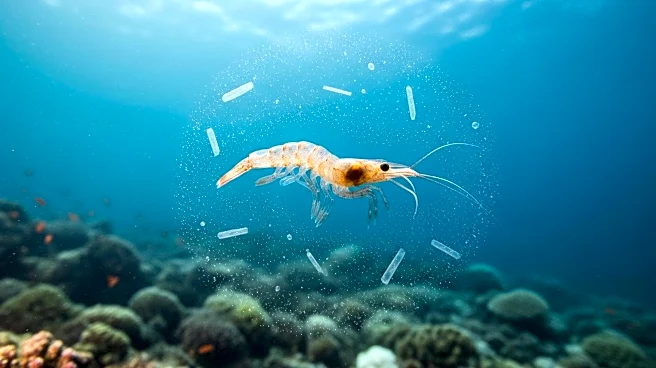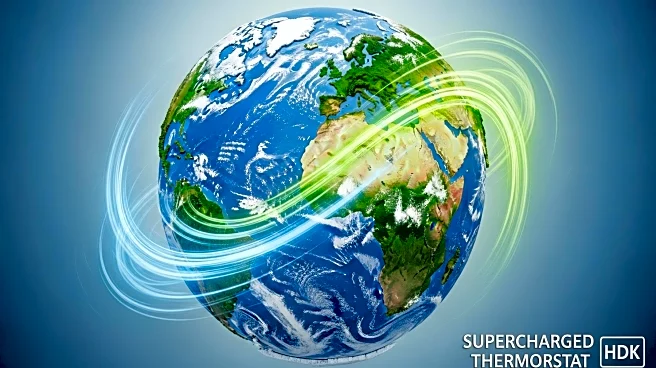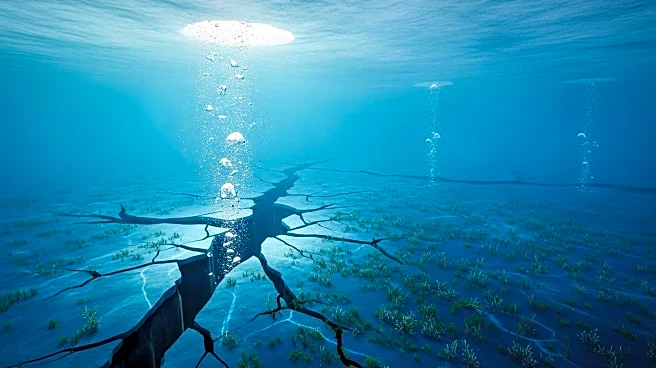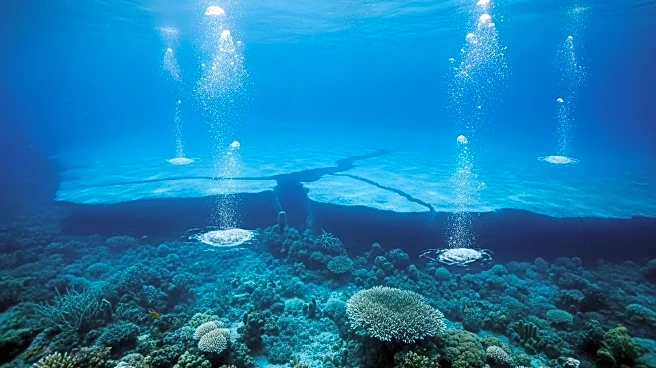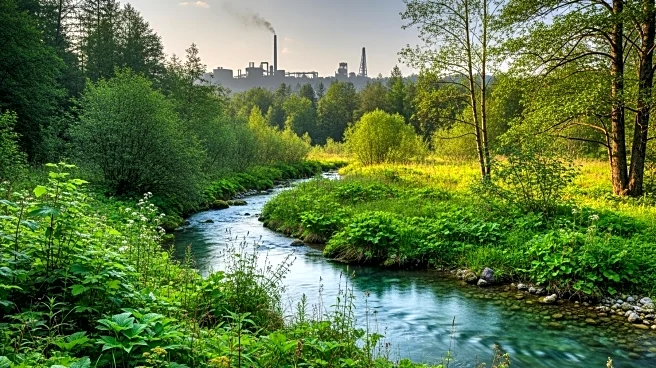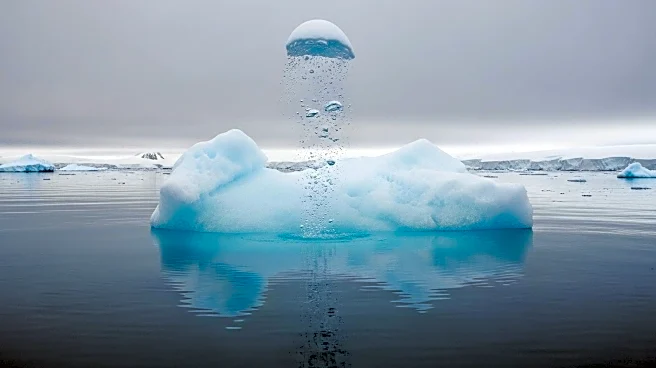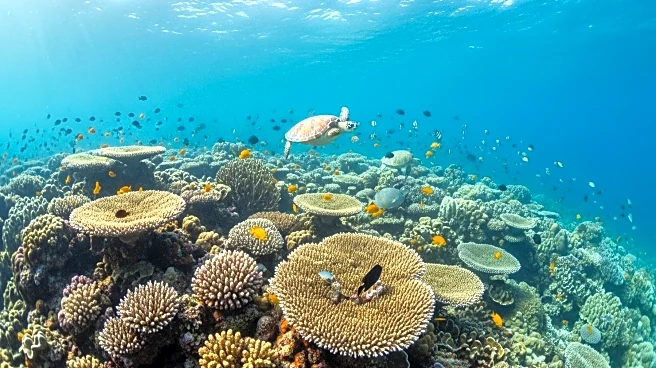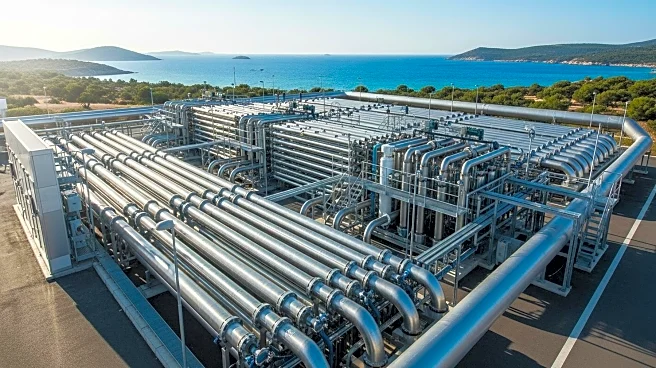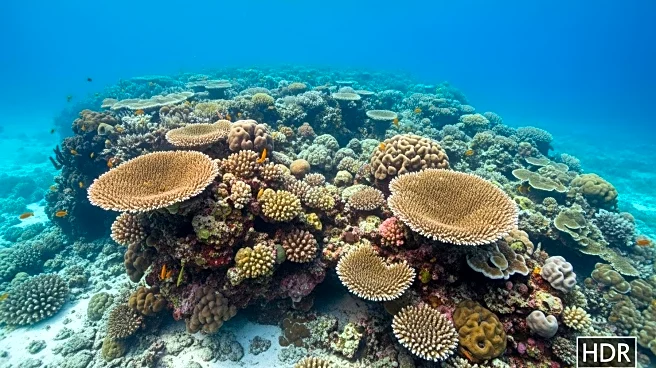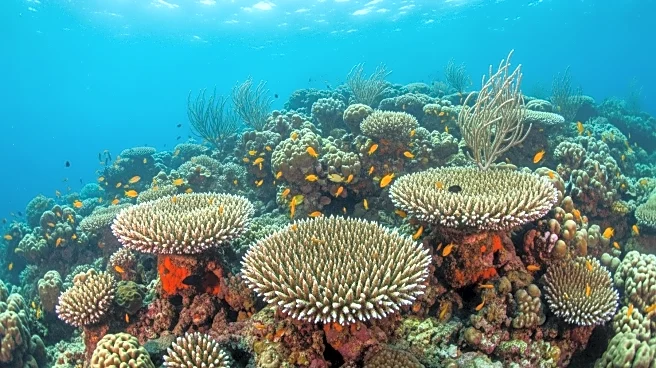What's Happening?
Recent research has unveiled a critical function of Antarctic krill in the ecosystem: carbon sequestration. Krill feed by ingesting ocean water and capturing phytoplankton, subsequently releasing carbon-rich particles called boluses that sink to the ocean floor. This process is estimated to provide between $4 billion and $46 billion worth of ecosystem services annually, depending on carbon pricing. However, a new study has raised concerns about microplastic pollution affecting krill feeding and digestion. Observations in laboratory settings revealed that microplastics cause krill to release boluses more frequently, potentially disrupting their nourishment and carbon sequestration capabilities.
Why It's Important?
The increased release of boluses due to microplastics could undermine krill's role in the food chain and their ability to sequester carbon, a crucial process for mitigating climate change. As global temperatures rise, the need to remove carbon from the atmosphere becomes more urgent. If microplastics reduce the amount of carbon krill can sequester, it could lead to higher atmospheric carbon levels and exacerbate global warming. This discovery highlights the broader environmental impact of microplastic pollution, emphasizing the need for comprehensive strategies to address plastic waste.
What's Next?
Further research is necessary to understand the full impact of microplastics on krill feeding and bolus formation. Meanwhile, the study serves as a warning about the extensive effects of microplastic contamination on ecosystems and human health. Efforts to reduce plastic pollution require global cooperation, but individuals can contribute by opting for plastic-free products and supporting brands with sustainable packaging. These actions can help decrease plastic waste and signal consumer preference for environmentally friendly alternatives.
Beyond the Headlines
The findings underscore the ethical and environmental challenges posed by microplastic pollution. As krill play a vital role in marine ecosystems and carbon sequestration, their disruption could have long-term consequences for biodiversity and climate stability. Addressing microplastic pollution involves not only technological solutions but also cultural shifts towards sustainable consumption and production practices.
